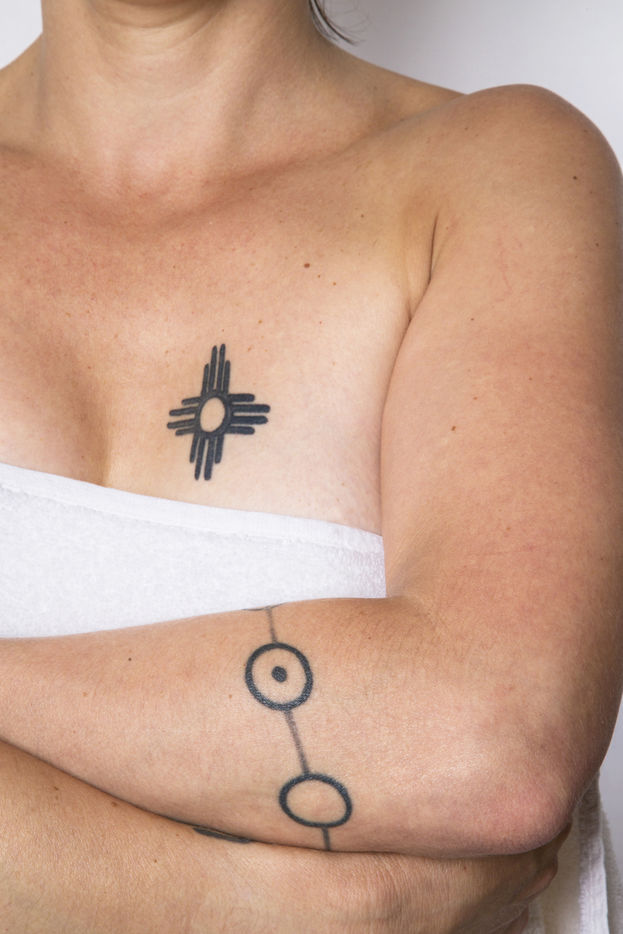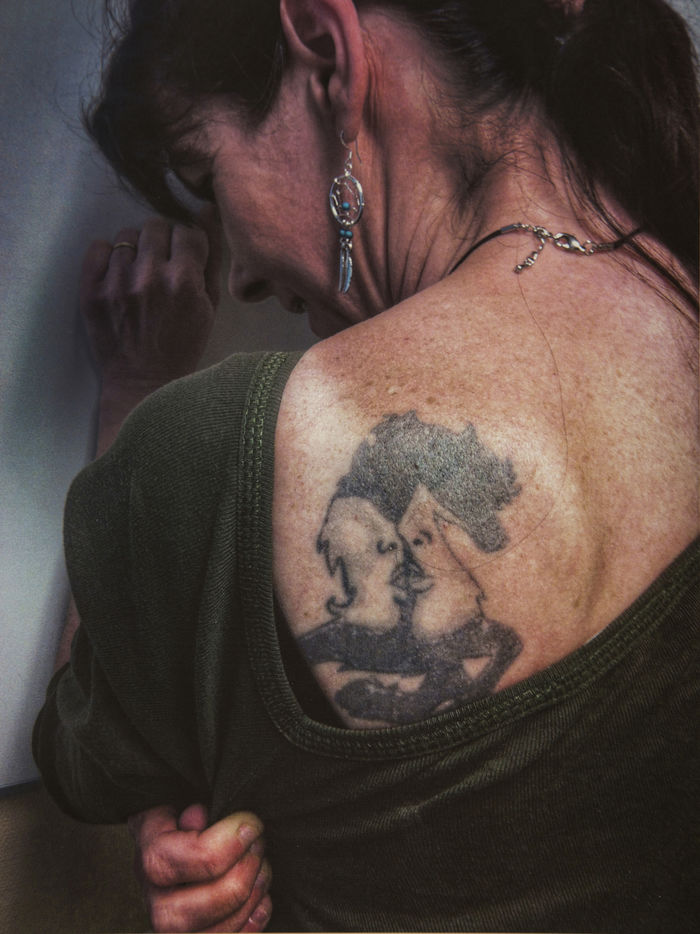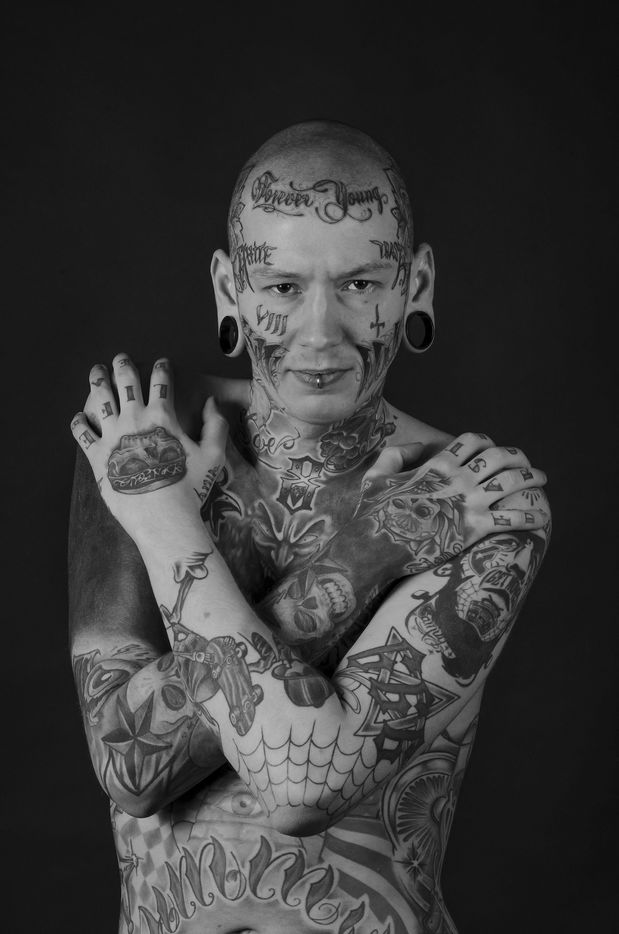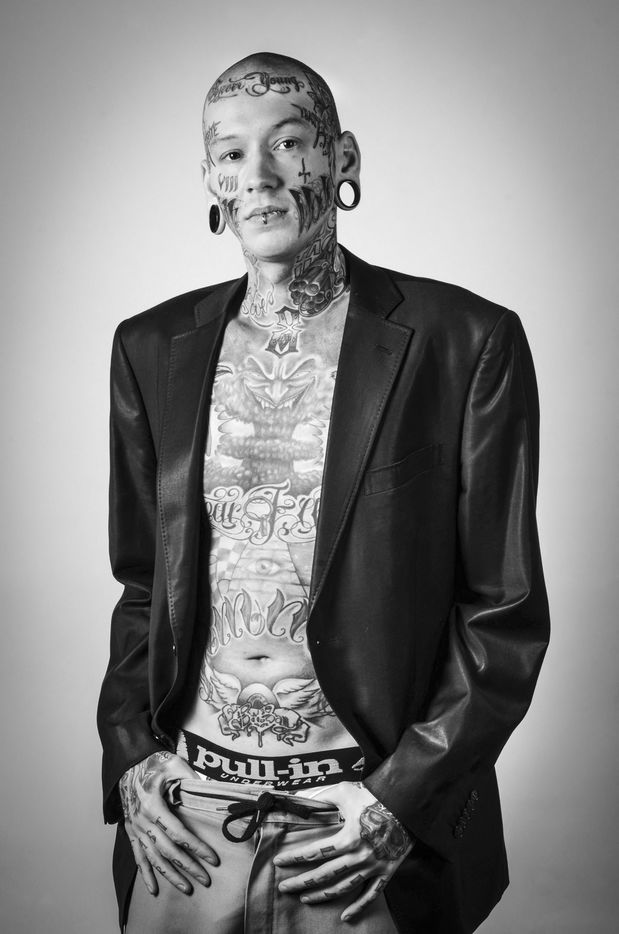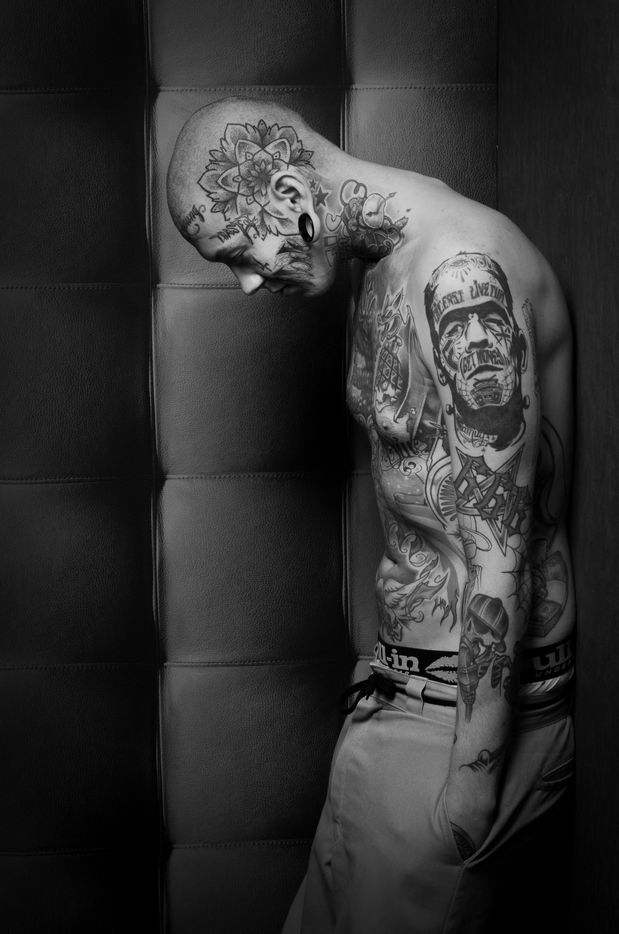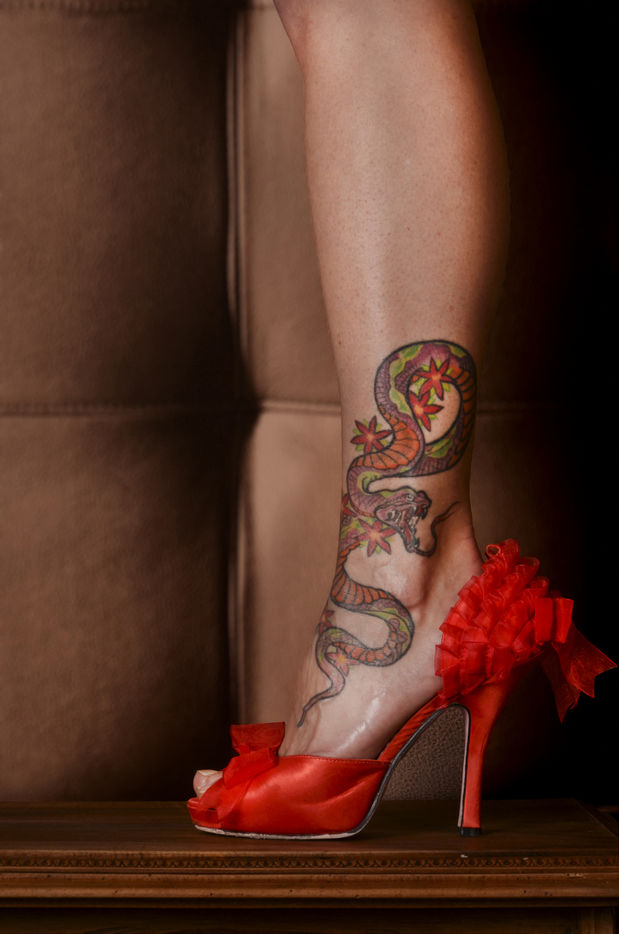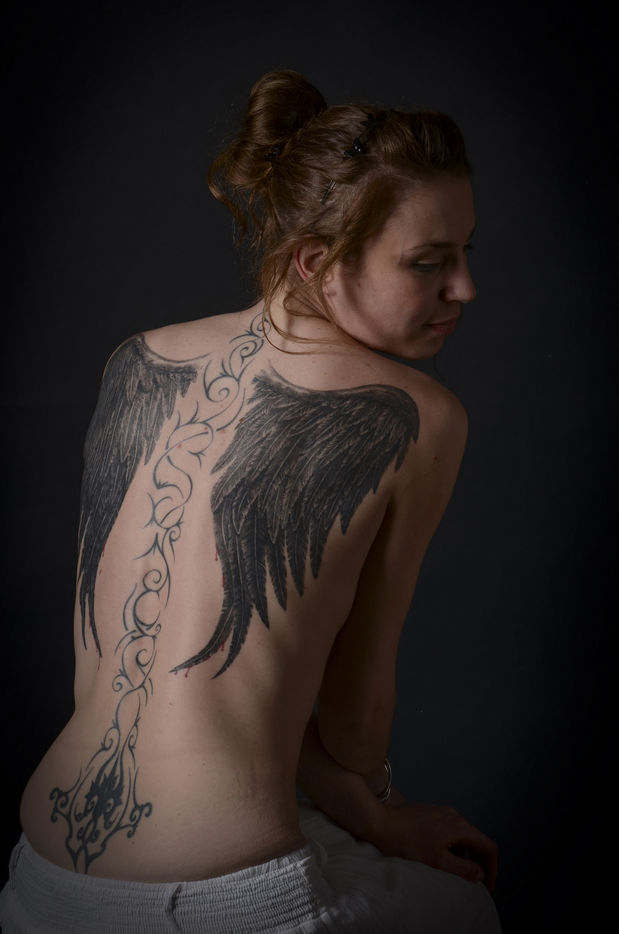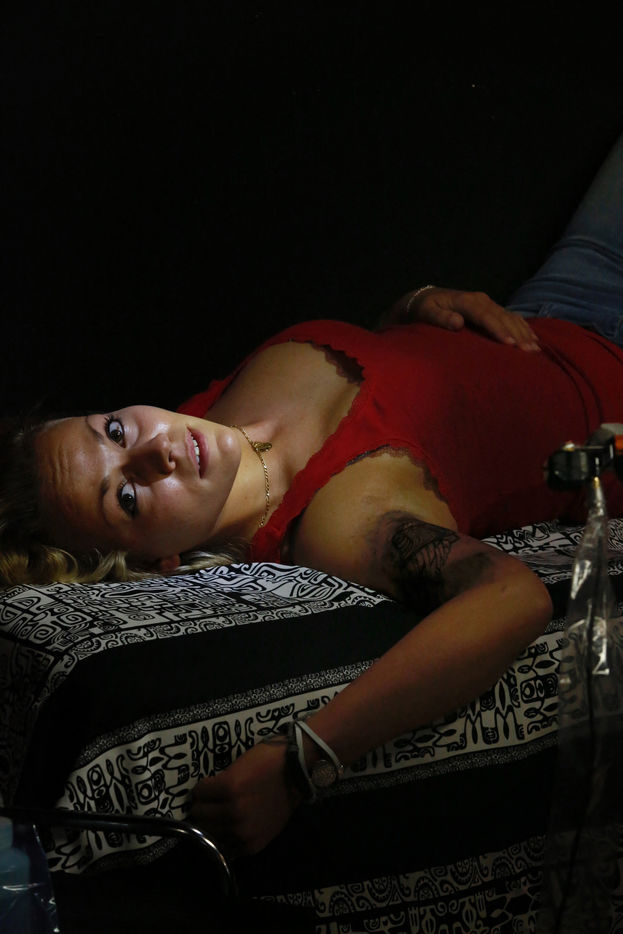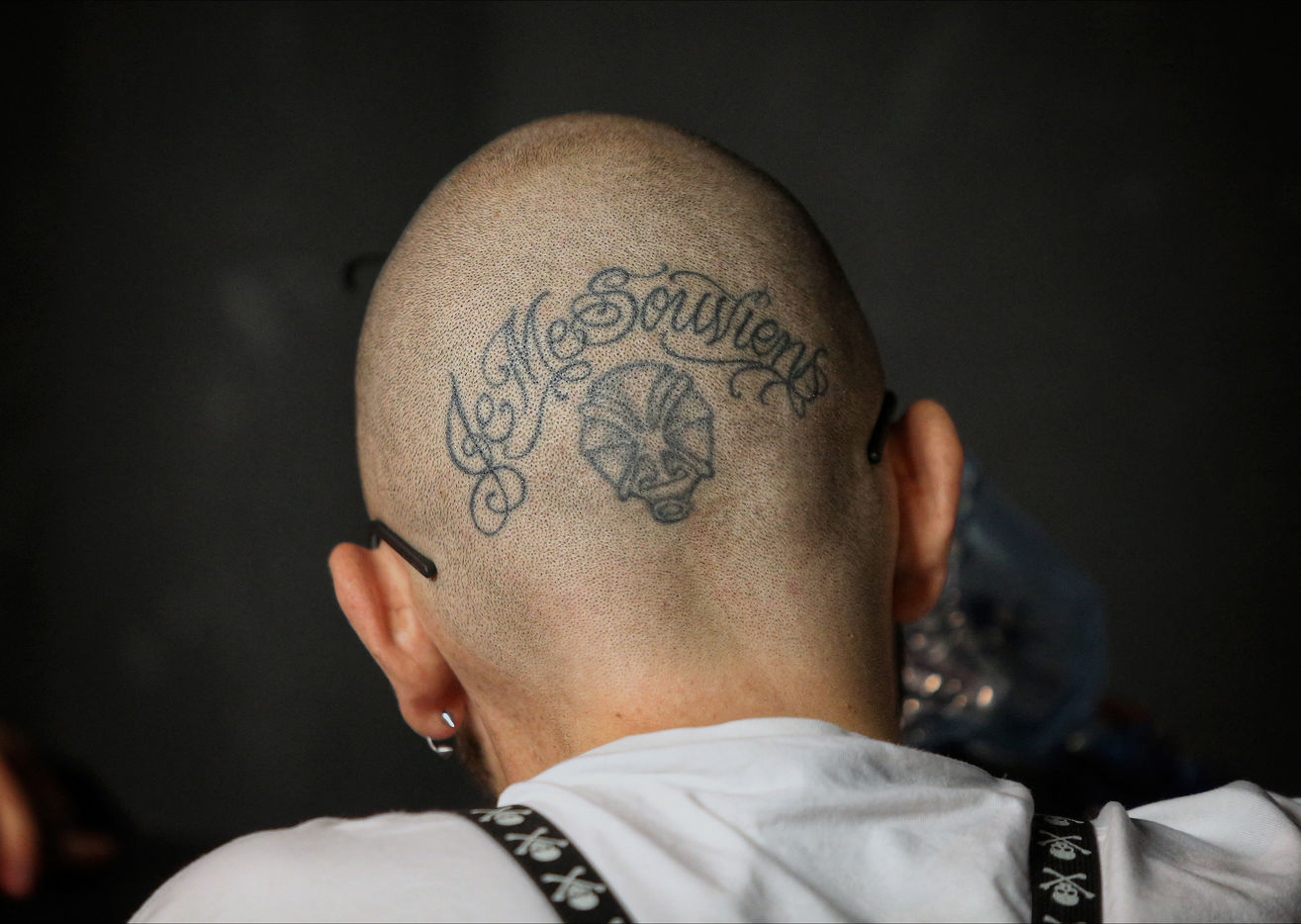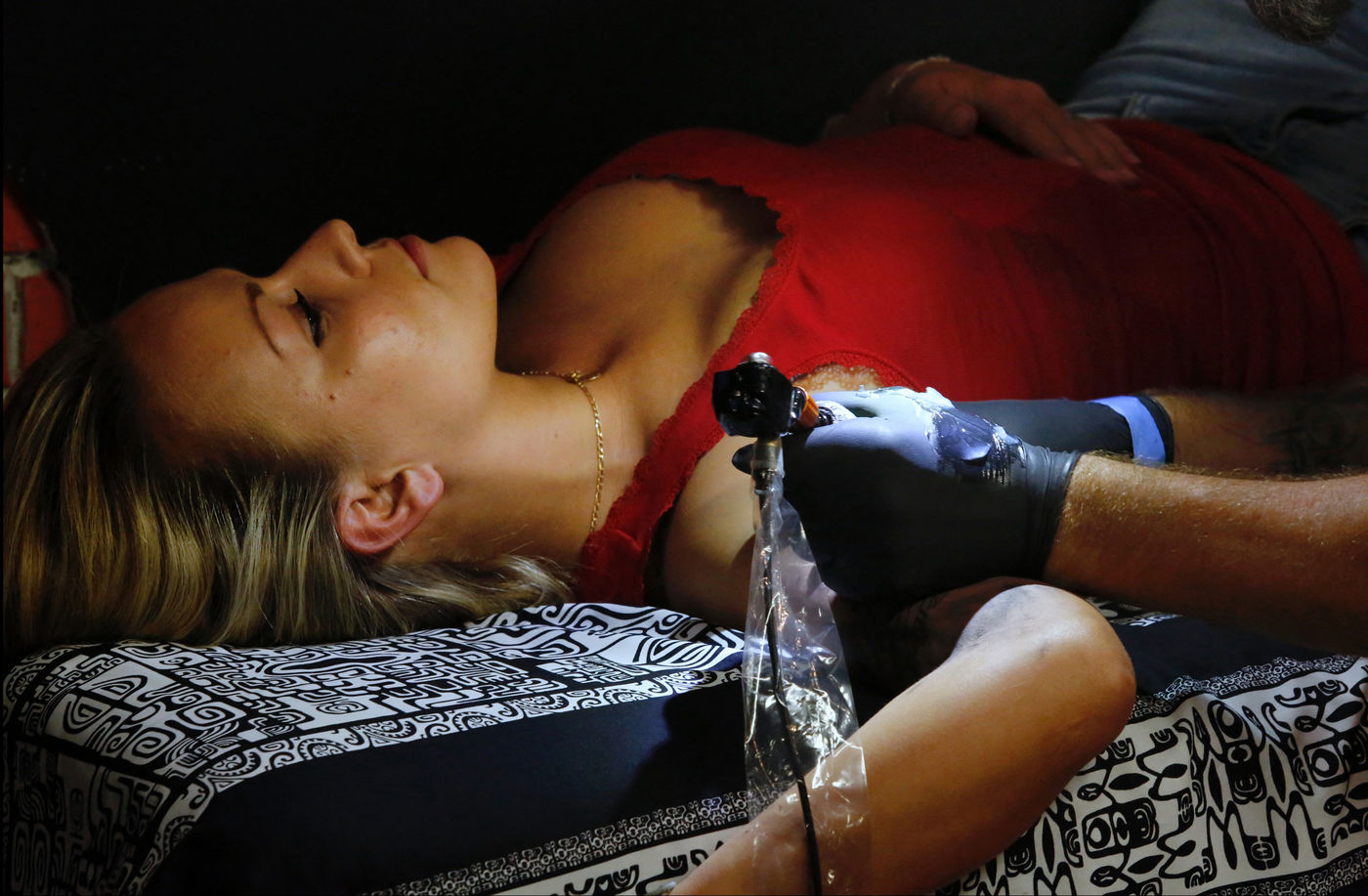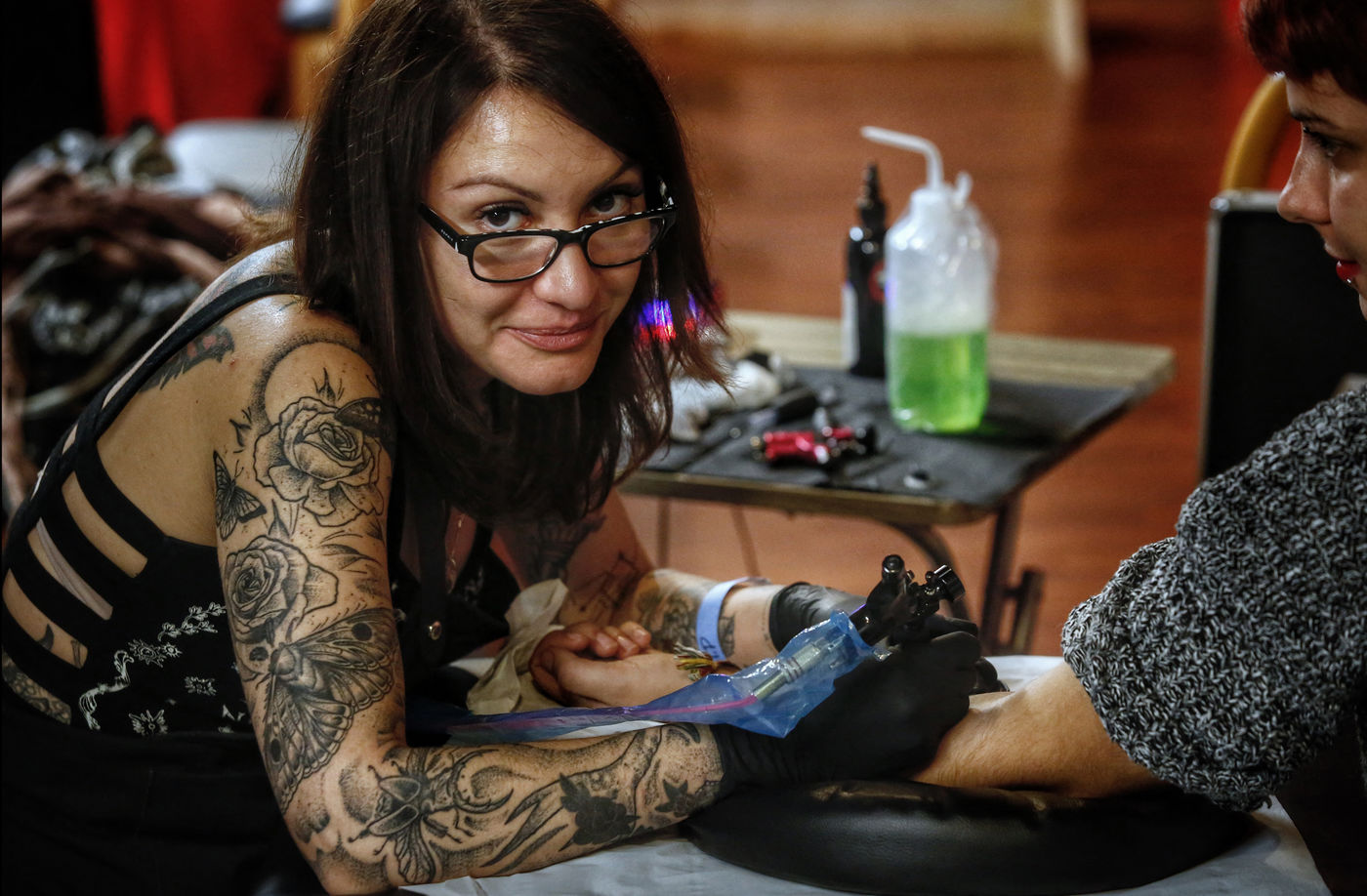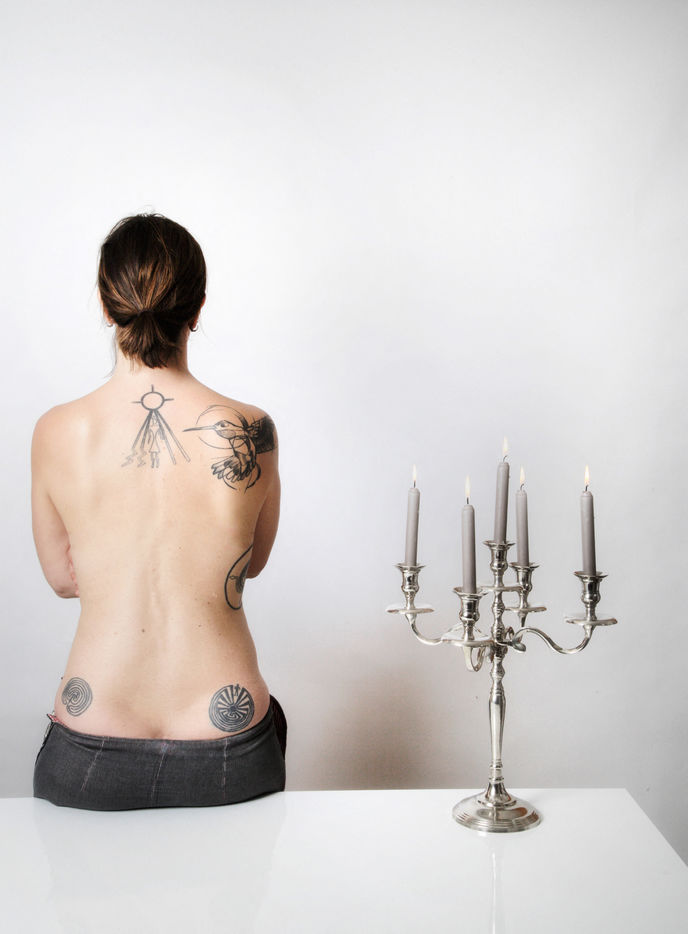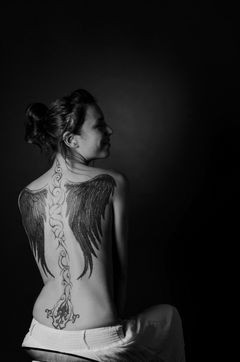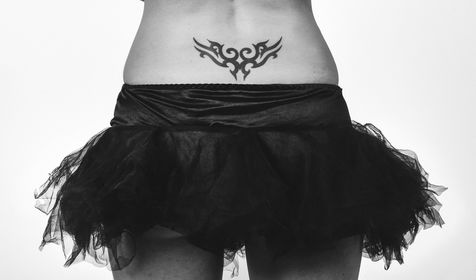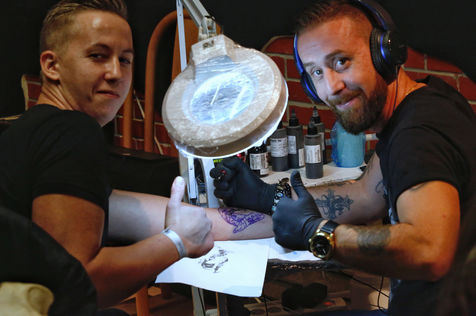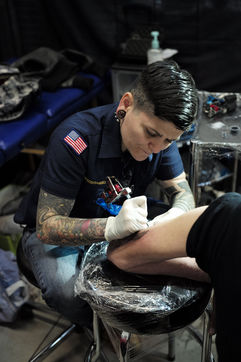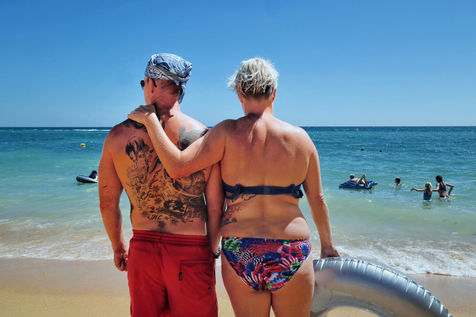Le tatouage tout un art... Le corps comme support...
Le tatouage, bien qu'ancestral, n'a pas attendu le monde moderne pour s'exprimer. Ce n'est pas simplement un dessin décoratif, c'est l'identité de celui qui le porte. Il témoigne de sa vie, de ses passions, de ses désirs. Dans le passé, il pouvait indiquer l'appartenance à une tribu, une religion, mais il a vite pris une place décorative sur le corps, comme un bijou qui sera toujours là.
J'ai découvert un monde où certains ont besoin d'afficher leur identité, d'autres des évènements marquants de leur vie et d'autres encore souhaitent se différencier des autres par une « touche » plus personnelle.
Le mot « tatouage » vient du tahitien "Tatau" qui signifie « dessiner », « marquer », et dérive vers le mot "Ta-atouas". "Ta" veut dire dessin et "atua" esprit. C'est le docteur Berchon qui, vers 1772, lors d' un voyage de l'anglais James Cook vers Tahiti trouva ce mot devenu à présent très commun : "Tattoo"
Le mot français « tatouage » trouvera sa place dans le dictionnaire de l'académie française en 1798.
La trace des premiers tatouages remonte à 3500 av J-C, découverts sur un homme emprisonné dans la glace des Alpes Italo-autrichiennes, puis en Egypte sur trois momies tatouées sur les bras 2000 av J-C du coté de Deir el Bahari.
James Cook découvre, lors de son voyage en Nouvelle Zélande, des Maoris tatoués sur le visage, pour afficher l'appartenance à leur tribu. Les Japonais avaient aussi instauré l'art du tatouage sur une grande partie du corps, notamment les Samouraïs et les Yakusa.
Chez nous, en France, ce sont les Bretons qui commencèrent à arborer des tatouages du temps de Jules César avec les Celtes et leurs tatouages bleus.
Le tatouage a malheureusement aussi servi de marquage, pour les esclaves ou plus tard les prisonniers de guerre ou de nos jours les détenus.
Dans les années 90, le tatouage explose en France avec des nombreux salons qui s'installent ici et là, avec parfois une hygiène rudimentaire qui est néanmoins devenue une priorité pour la majorité des tatoueurs.
Le tatoué affiche l'originalité de son corps, des moments marquants de sa vie. Agréable ou douloureux, le tatouage peut embellir, interpeller, provoquer, choquer voire faire peur.
Parfois certains tatoués ajoutent à leur tatouage un implant pour lui donner du relief. D'autres tatouages cachent parfois une vilaine cicatrice chirurgicale.
Quoi que l'on puisse penser du tatouage, il affirme l' identité de celui qui le porte.
Mais le tatouage actuel reste tout un art, avec le corps pour support.
Une partie de cette série est exposée à la Villa Pérochon de Niort jusqu'au 23 février.
Tattooing is an art... The body as a support...
Like many people, I wanted to get a tattoo, but because I didn't have enough motivation, and because I couldn't find the drawings that matched me, I never took the step. However, I became interested in why others get tattoos, from simple sentences to more artistic drawings, and I immersed myself in this world of tattooing for my photographic project with a novice look.
I have discovered a world where some people need to show their identity, others need to show off their life events and still others want to differentiate themselves from others with a more personal "touch".
The tattoo, although ancestral, did not wait for the modern world to express itself. It is not just a decorative design, it is the identity of the person who wears it. He testifies to his life, his passions, his desires. In the past, it could indicate belonging to a tribe, a religion, but it quickly took a decorative place on the body, like a jewel that will always be there.
The word "tattoo" comes from the Tahitian "Tatau" which means "to draw", "to mark", and drifts towards the word "Ta-atouas". "Ta" means drawing and "atua" means spirit. It was Dr. Berchon who, around 1772, during a trip from the English James Cook to Tahiti, found this word, now very common: "Tattoo".
The French word "tattoo" will find its place in the dictionary of the French Academy in 1798.
The trace of the first tattoos dates back to 3500 BC, discovered on a man trapped in the ice of the Italian-Austrian Alps, then in Egypt on three mummies tattooed on the arms 2000 BC on the side of Deir el Bahari.
James Cook discovers, during his trip to New Zealand, Maori tattooed on his face, to show that he belongs to their tribe. The Japanese had also introduced the art of tattooing over a large part of the body, including Samurai and Yakusa.
In France, it was the Bretons who began to display tattoos from Julius Caesar's time with the Celts and their blue tattoos.
Unfortunately, tattoos were also used as markings, for slaves or later prisoners of war or nowadays prisoners of war.
In the 90s, tattooing exploded in France with many salons setting up here and there, sometimes with a rudimentary hygiene that has nevertheless become a priority for the majority of tattoo artists.
The tattooed person displays the originality of his body, the highlights of his life. Pleasant or painful, tattooing can embellish, challenge, provoke, shock or even frighten.
Sometimes some tattooed people add an implant to their tattoo to give it relief. Other tattoos sometimes hide a nasty surgical scar.
Whatever one may think of the tattoo, it affirms the identity of the person who wears it.
But the current tattoo remains quite an art, with the body as a support.
Part of this series is on display at the Villa Pérochon in Niort until February 23rd.
